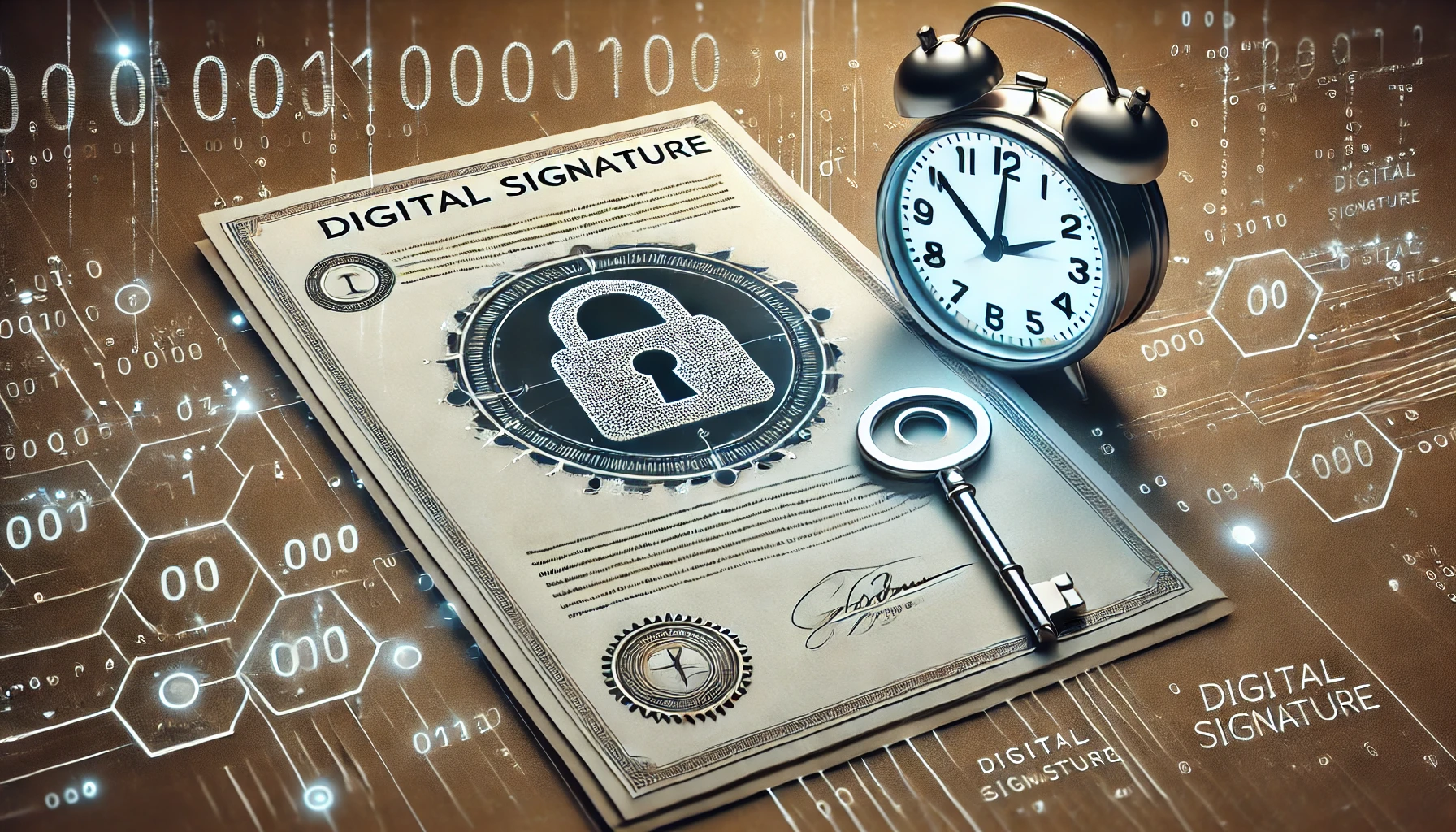What is the Purpose of Time Stamping in Digital Signatures?
 Riya Sander
Riya Sander
Digital signatures are essential for modern security. They help verify and authenticate digital documents and transactions.
A key part of digital signatures is the time stamp. It shows when the document was signed and confirms its authenticity over time.
Time stamping adds an extra layer of security and provides compliance with legal and regulatory compliance standards.
This article explores the purpose of time stamping in digital signatures and its significance in preserving the integrity of digital documents.
What is a Digital Signature?
A digital signature is a type of electronic signature that checks the authenticity and integrity of digital information. Digital signatures use cryptographic techniques with a pair of keys: a public key and a private key.
When someone signs a digital document, they use their private key to create a unique signature based on the document's contents. Anyone can verify this signature using the signer’s public key.
The signature ensures two main things:
Integrity – The document has not been changed since it was signed.
Non-repudiation – The signer cannot deny signing the document because the signature is linked to their private key.
While this system makes sure the document is secure and authentic when signed, it does not show when the document was signed. That’s where time stamping comes in.
What is Timestamping?
Time stamping is a process that proves a document or data existed at a certain time.
Once you add a time stamp, any future changes to the document can be detected, and the original creation time stays verifiable. Trusted Time-Stamping Authorities (TSAs) usually manage this process to ensure accuracy and security.
Purpose of Time Stamping in Digital Signatures
Time stamping plays an important role in enhancing the security and integrity of digital signatures. Here are the key purposes of time stamping in digital signatures:
1. Proof of Existence at a Specific Time
The main purpose of time stamping in digital signatures is to show that a document or data existed at a specific time. This is important for things like legal contracts, financial transactions, or intellectual property filings.
By adding a reliable time stamp, the signer can prove that the document was signed on a certain date and time, confirming it was in that exact form at that moment.
2.Maintaining Trustworthiness Over Time
Time stamping is essential for keeping a document trustworthy even after it has been digitally signed. If the private key used to sign the document is compromised or the signing certificate expires, the document's authenticity might be doubted.
However, with a timestamp, it can prove that the document was signed when the key was still valid, ensuring the signature's integrity even after the key expires or is revoked.
3.Legal and Regulatory Compliance
In many industries, time stamping is needed to follow legal and regulatory rules. For example, electronic signature laws like the eIDAS regulation in the EU and the ESIGN Act in the US often require timestamps to show that a document was signed at a certain time. Time stamps act as an audit trail in legal disputes, providing proof of when transactions happened and confirming that signatures were made correctly and reliably.
Common Use Cases
Legal Contracts and Documents
One of the most common uses for time stamping in digital signatures is for legal contracts, agreements, and other important documents. Time stamping proves when a document was signed and ensures it hasn't been changed since. This is crucial for confirming the validity and enforceability of electronic contracts in legal matters.
Intellectual Property Registration
Time stamping is used to certify when a work, trademark, or invention was first created to protect copyrights and establish priority. The timestamp serves as proof of when the intellectual property was registered.
Financial Transactions
In the financial industry, time stamping is crucial for stock trades, banking operations, and other transactions where exact timing is important for compliance and integrity. Accurate timestamps help ensure trades follow regulations and provide an audit trail.
Software Development and Code Signing
Time stamping is crucial for code signing to verify when software was signed by the developer. This ensures the software hasn't been tampered with and builds trust in its distribution.
Supply Chain Security
In manufacturing and logistics, time stamping is used to track and verify the authenticity of products and components throughout the supply chain. This helps prevent counterfeiting and ensures the provenance of goods.
Document Archiving
Organizations rely on time stamping to archive important records like financial statements, medical records, and other critical documents. The timestamps ensure the integrity of the documents over long periods of time.
Conclusion
Time stamping is a key part of digital signatures, making sure documents and transactions are verified and kept safe over time. By showing proof of existence at a certain moment, time stamps protect against future disputes, key compromises, and legal issues. As digital communications grow, time stamping will stay important for keeping digital records trustworthy and valid for the long term in both business and legal settings.
Subscribe to my newsletter
Read articles from Riya Sander directly inside your inbox. Subscribe to the newsletter, and don't miss out.
Written by
